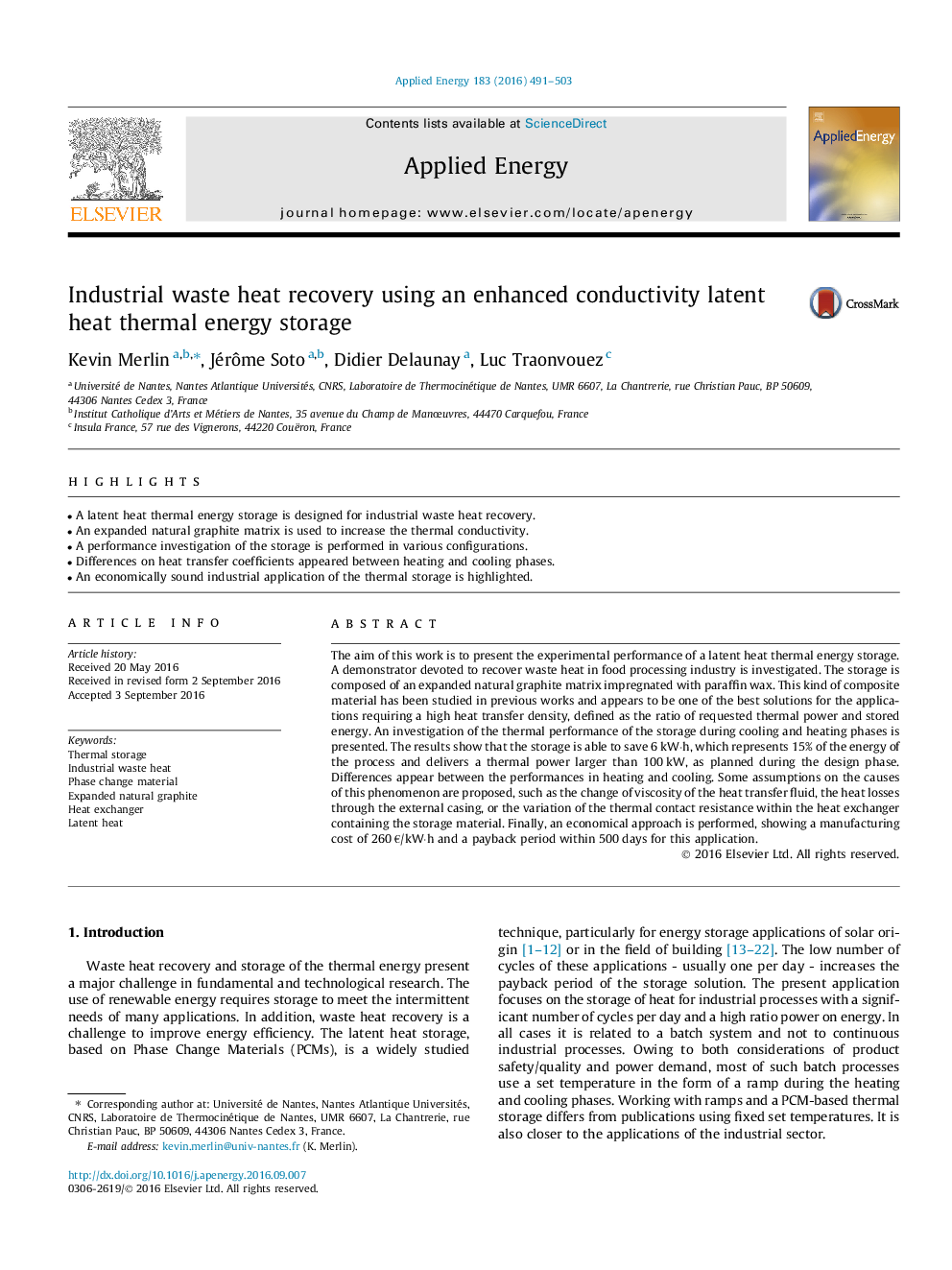| Article ID | Journal | Published Year | Pages | File Type |
|---|---|---|---|---|
| 4916592 | Applied Energy | 2016 | 13 Pages |
Abstract
The aim of this work is to present the experimental performance of a latent heat thermal energy storage. A demonstrator devoted to recover waste heat in food processing industry is investigated. The storage is composed of an expanded natural graphite matrix impregnated with paraffin wax. This kind of composite material has been studied in previous works and appears to be one of the best solutions for the applications requiring a high heat transfer density, defined as the ratio of requested thermal power and stored energy. An investigation of the thermal performance of the storage during cooling and heating phases is presented. The results show that the storage is able to save 6 kW·h, which represents 15% of the energy of the process and delivers a thermal power larger than 100 kW, as planned during the design phase. Differences appear between the performances in heating and cooling. Some assumptions on the causes of this phenomenon are proposed, such as the change of viscosity of the heat transfer fluid, the heat losses through the external casing, or the variation of the thermal contact resistance within the heat exchanger containing the storage material. Finally, an economical approach is performed, showing a manufacturing cost of 260 â¬/kW·h and a payback period within 500 days for this application.
Keywords
Related Topics
Physical Sciences and Engineering
Energy
Energy Engineering and Power Technology
Authors
Kevin Merlin, Jérôme Soto, Didier Delaunay, Luc Traonvouez,
